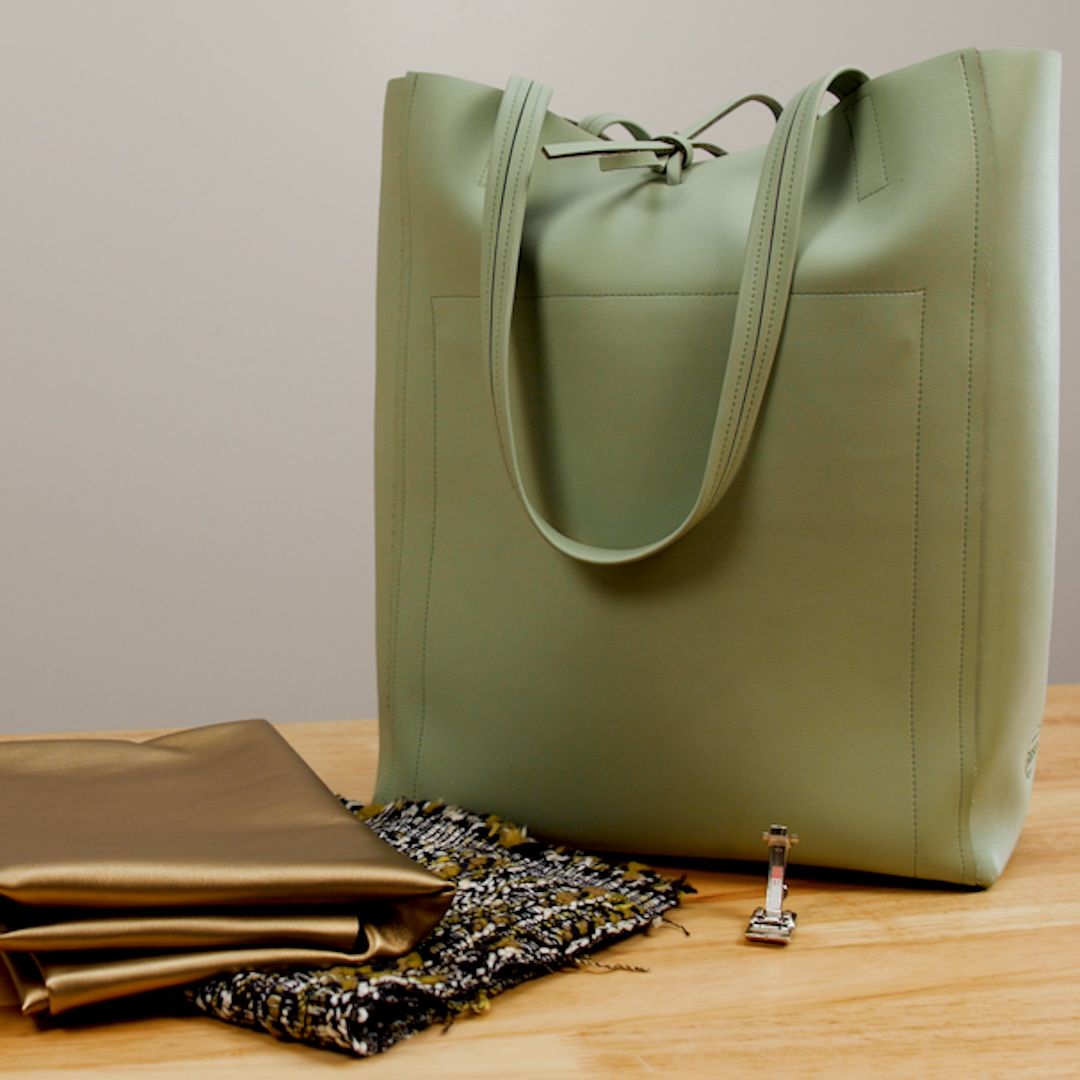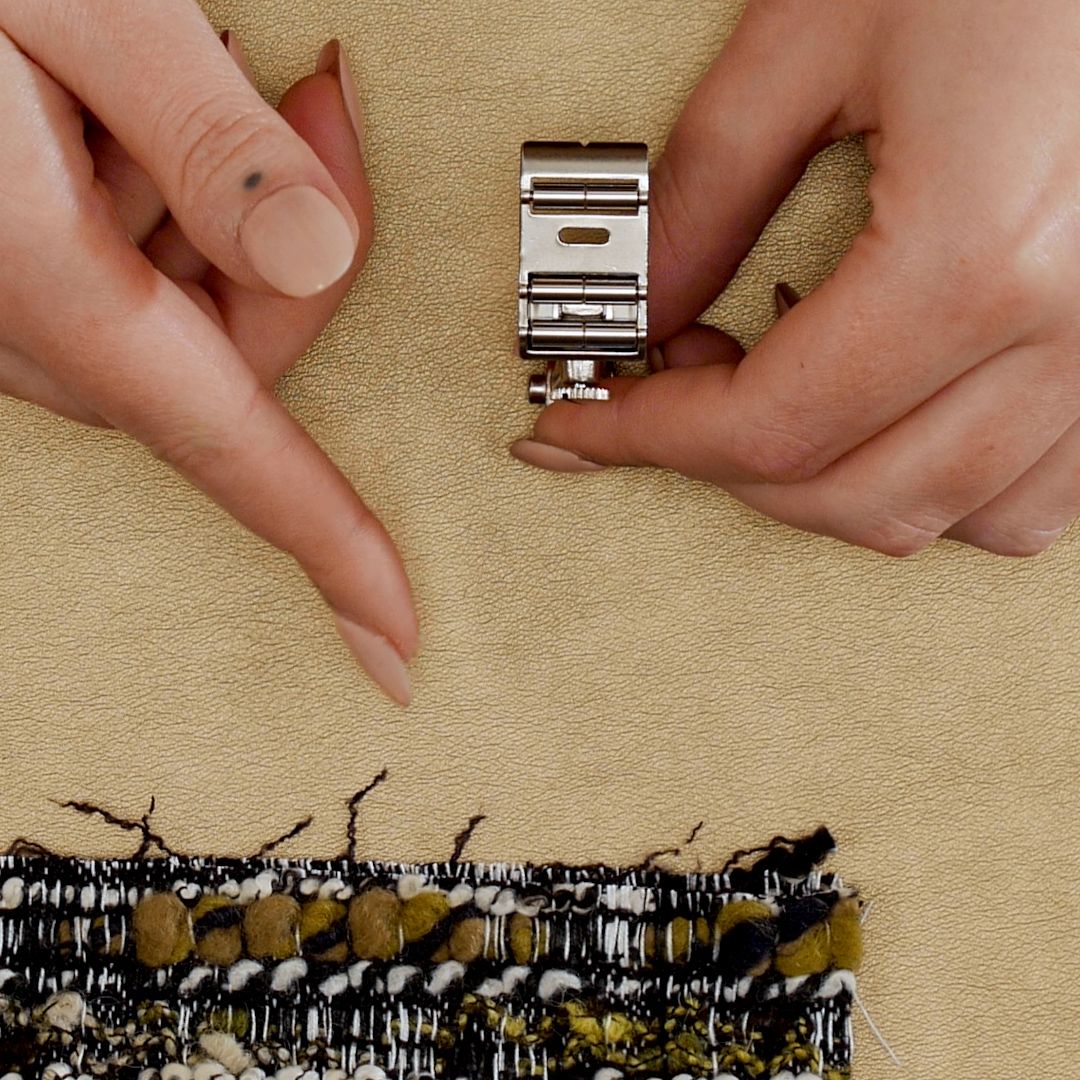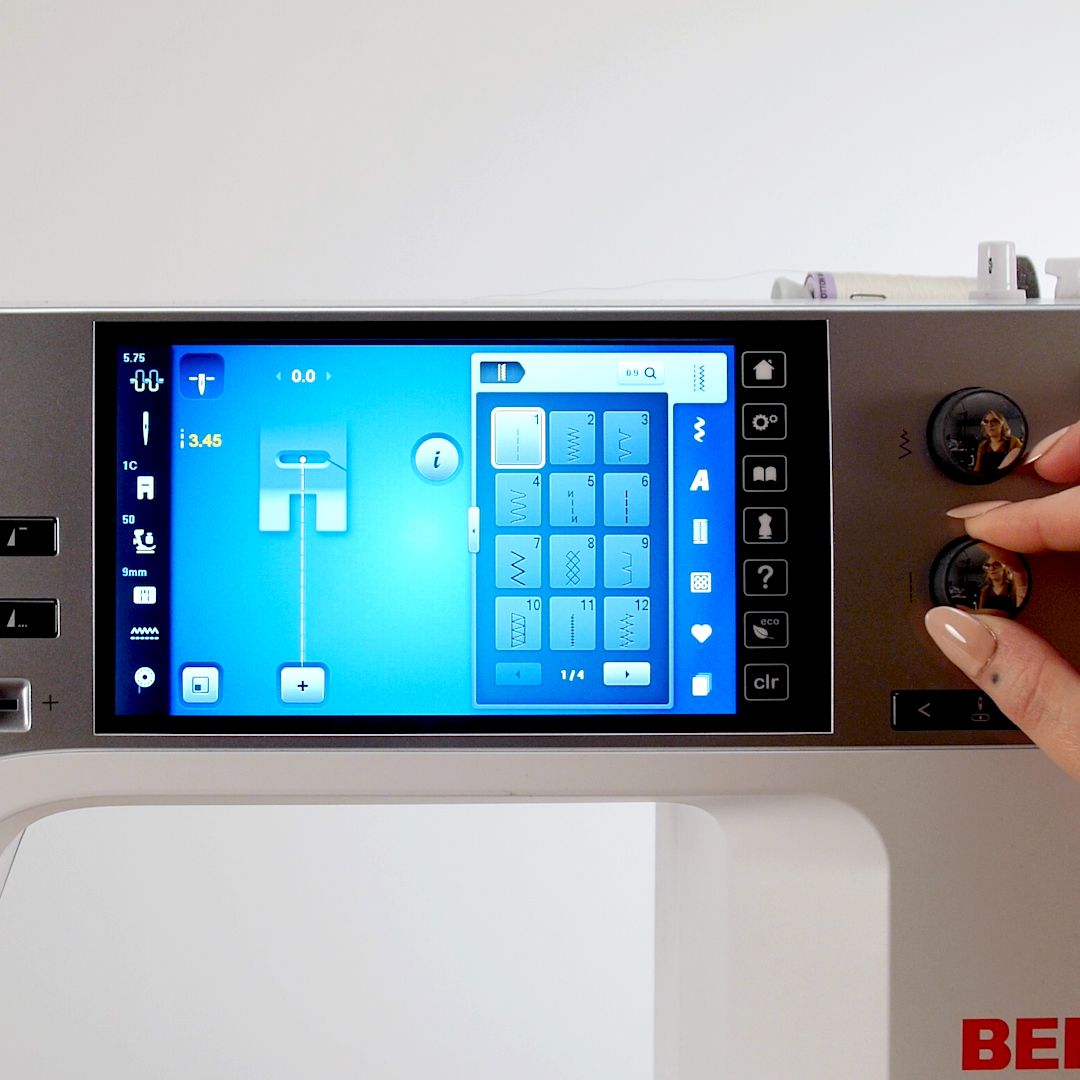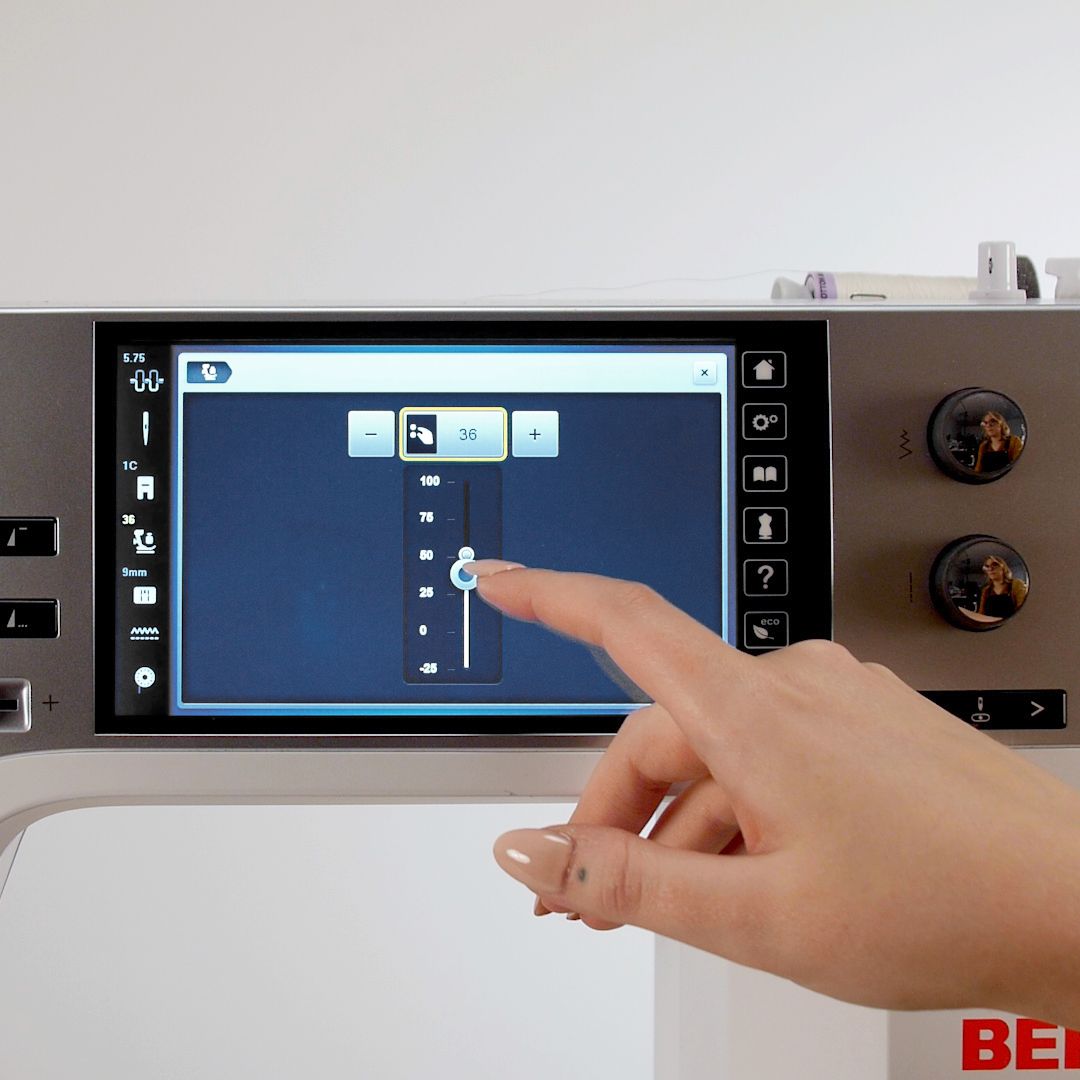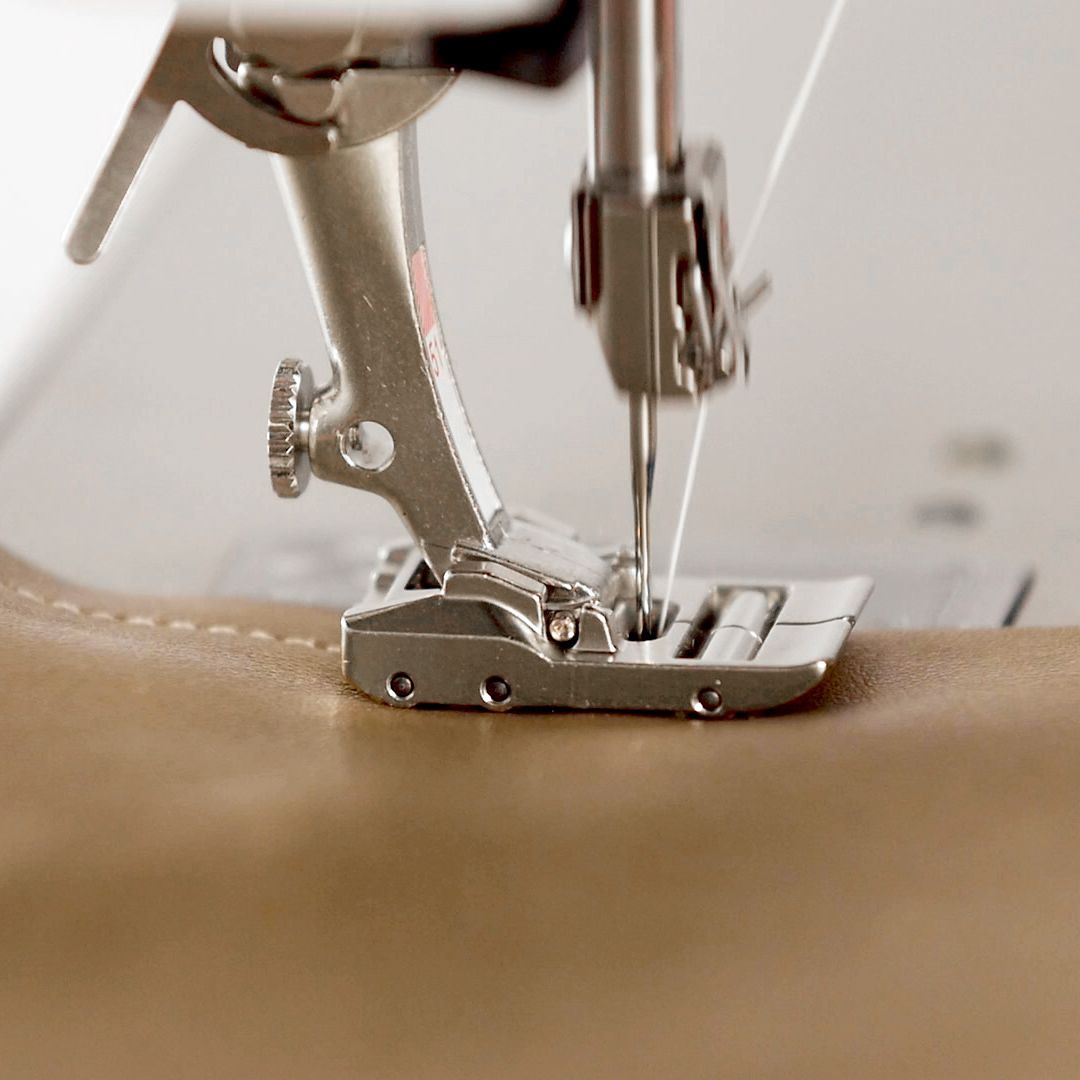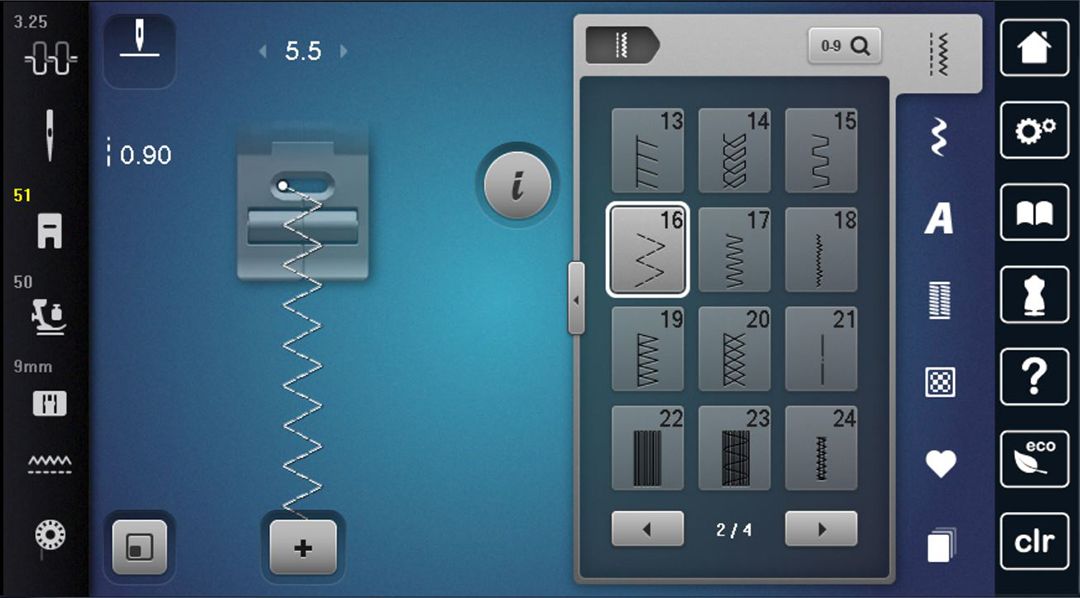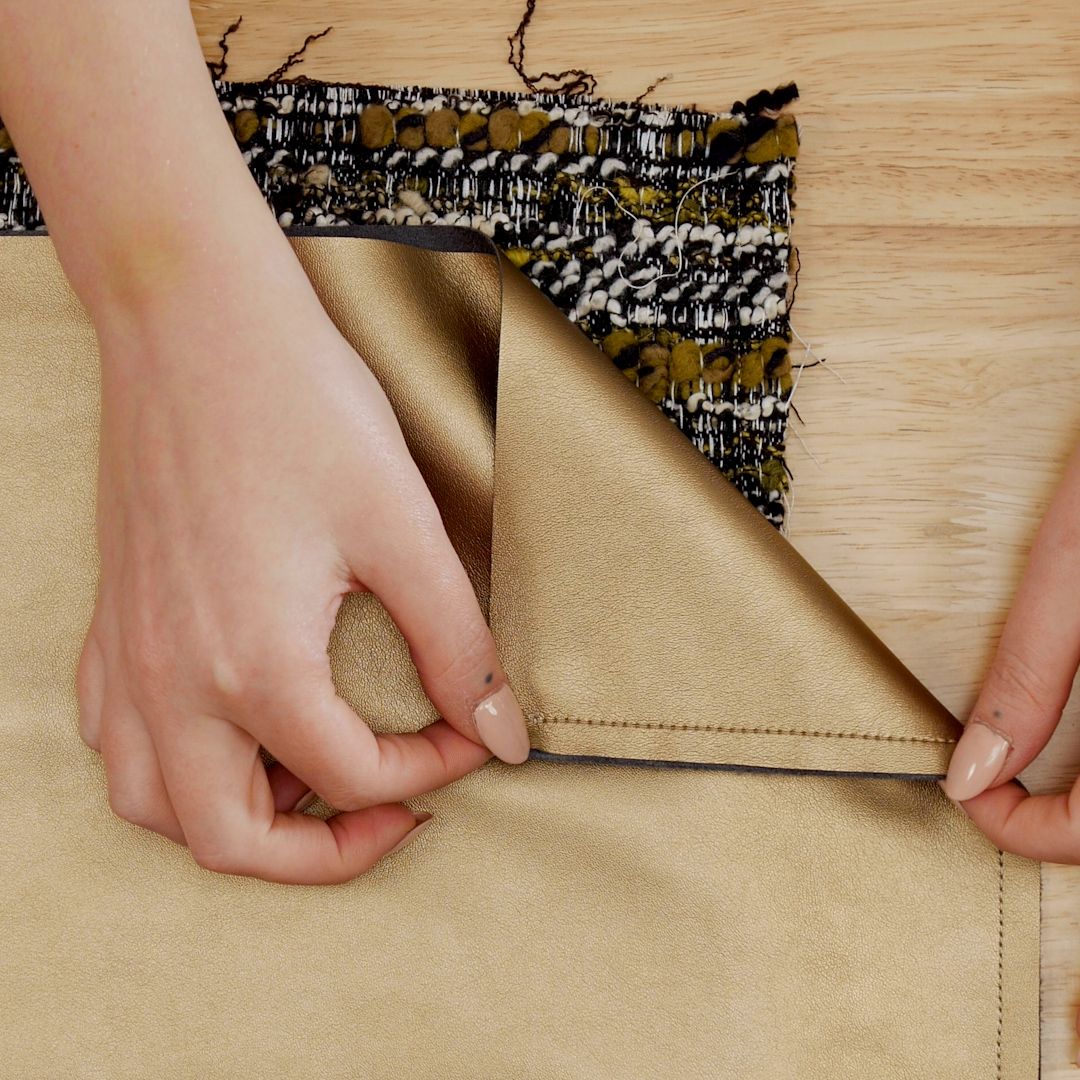Presser Foot Tip: Roller Foot #51
BERNINA has so many specialty presser feet designed to set you up for success no matter what project you want to sew or what fabric you want to use. One example of this is Roller Foot #51.
Unlike many presser feet, Roller Foot #51 does not rest flat across the feed dog. It has three small rollers (one in front of the needle and two behind) that spin as fabric moves under the presser foot. These rollers allow fabric to slide along the bottom of the foot instead of getting stuck in place. There are two fantastic cases to use this presser foot: with leather or vinyl and with uneven fabrics.
Leather & Vinyl
These fabrics are known to be tricky to sew with, as their surface can get stuck to your presser foot or machine. The rollers on the bottom of Roller Foot #51 keep your fabric moving smoothly. Along with the use of this specialty presser foot, here are some other things to consider when sewing leather or vinyl fabrics.
Lengthen your stitch. Because these fabrics are not woven or knit, and instead are one solid piece, lengthening your stitch creates a stronger seam because there are fewer perforations in the fabric. Generally between 3 and 4 mm is an ideal stitch length on these fabrics.
Reduce presser foot pressure. Again, because there are no yarns to create a weave or knit in this fabric, vinyl and leather can stretch or warp without very good recovery. Fabrics like vegan leather (or pleather) are especially prone to stretching if too much pressure is applied while stitching. Reduce your presser foot pressure by about 30% of your standard setting.
Use the correct needle and thread. Be sure to use a proper leather needle when sewing with leather or vinyl. These needles are different because they actually function as a tiny hole punch, so that rather than just piercing through the fabric, the needle actually carves out a small hold for your thread to sit. This will reduce friction on your thread both as you sew and through the lifetime of your seam. Only polyester thread should be used with these fabrics as other fibers (like cotton or rayon) are far too delicate. You may also opt for a higher weight thread, like 28 or 30wt.
Uneven & Bulky Fabrics
Roller Foot #51 also performs well when stitching over fabric that has uneven bulk, such as tweed. Because the front of the presser foot does not actually rest on the fabric, it is ideally suited to moving over uneven layers. The rollers act as wheels to help climb over textured surfaces. Here are a few extra tips for stitching uneven fabrics with Roller Foot #51.
Try a wider stitch. One of the advantages of this presser foot on bulky fabrics is its 5.5 mm wide needle opening. That means you can use decorative stitches or wider practical stitches. Uneven fabrics like tweed often have a small stretch fiber content (typically 2% or less of things like elastane or, less commonly, spandex.) Using a simple zigzag stitch, three-step zigzag stitch, or vari-overlock stitch may create a stronger seam depending on your fabric and project.
Tidy the threads first. There is no thread escape slot leading out from the needle opening on the Roller Foot #51. To keep your thread and seams tidy, bring the opening of the presser foot up around the needle, pull the thread through, and then attach the presser foot to the machine.
Consider needle and thread. Like with vinyl or leather, these fabrics may also benefit from a specialty needle. A ballpoint needle may be beneficial in a fabric like tweed, as it will slip between the different textured yarns more easily. If your fabric has any stretch to it, you will also benefit from the strength of a polyester thread over more delicate fibers.
